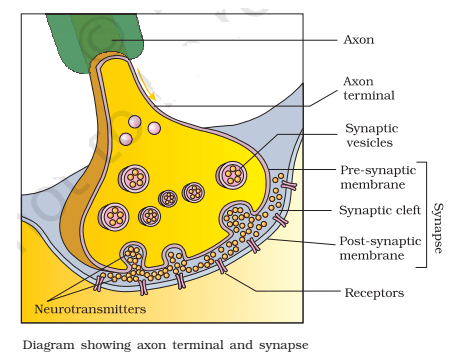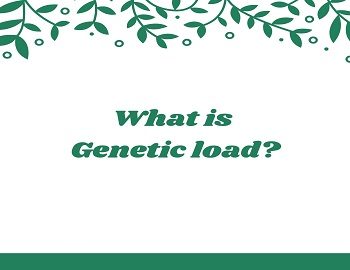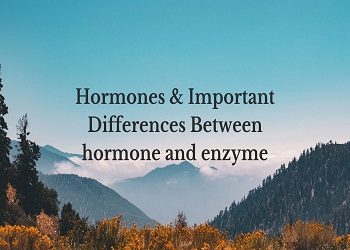Table of Contents
What is Synapse?
Synapse (also called interneural) is the connection between the axon of one neuron and the dendron of other neuron having a gap of 200 Å. Nerve Impulses travel from axon to dendron as one-way traffic or unidirectional transmission.
The end of the axon forms the pre-synaptic neuron (before synapse) and the tip of the dendron forms the post-synaptic neuron (after synapse). Ends of pre-synaptic ganglion are enlarged to form synaptic knob/button are separated from post-synaptic ganglion by a narrow passage (200 Å) called synaptic cleft filled with synaptic fluid.

Nerve Impulse is transmitted across the Synapse:
There are two types of synapses i.e. chemical and electrical, depending upon the nature of the transfer of information across the synapse.
Chemical Synapse:
The axon terminal divides into many branches and each ends into a synaptic knob. The synaptic knob of each axon comes in contact with the dendrite of the next neuron. The synaptic knob contains many synaptic vesicles in its cytoplasm and these vesicles store chemicals such as norepinephrine and acetylcholine (neurotransmitter). The membrane of the synaptic knob on the axon side is thickened due to cytoplasmic condensation and is called a presynaptic membrane. When a wave of depolarization reaches the presynaptic membrane, Ca2+ ions diffuse into the terminal from the surrounding fluid. The Ca2+ ions then stimulate synaptic vesicles in the terminal to move to the terminal membrane, fuse with it and then rupture vesicles for release of neurotransmitter into the cleft. These are then diffused into the synaptic gap (about 20 nanometres). They then combine with specific receptor molecules of the target cell or receiving cells dendrites, which is called the postsynaptic membrane. They cause sparking a second electrical current due to depolarization, passing on its signal. This results in the propagation of nerve impulse in the next neuron. To end the signal, the synaptic lobes reabsorbs some neurotransmitters and enzymes in the synapse neutralize others. In a chemical synapse, the nature of messenger neurotransmitter remains different in different synapses, thus permitting different kind of responses.
Electrical Synapse:
These synapses are specialized for rapid signal transmission. The cells are separated by a gap, the synaptic cleft, of only 0.2 nanometres so that an action potential arriving at the pre-synaptic side of the cleft can sufficiently depolarize the post-synaptic membrane to directly trigger its action potential.









Comments (No)